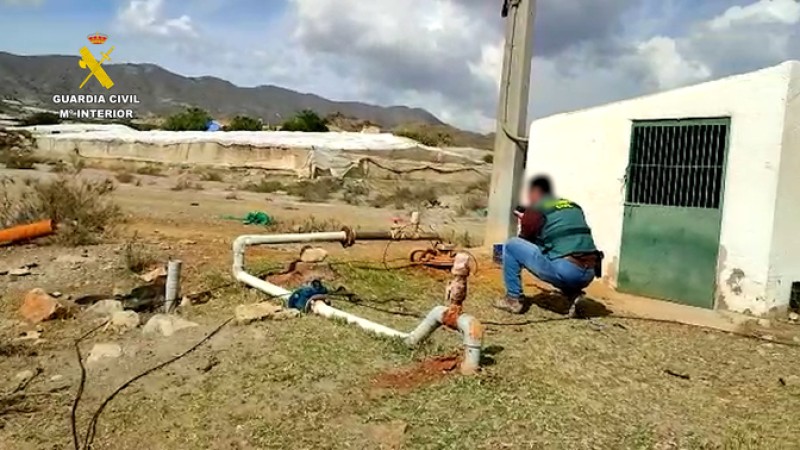Civil Guard investigators, in collaboration with hydrological experts, discovered that the stolen water was extracted for use in various greenhouses. Apart from the environmental damage from drawing such excessive amounts of water from subterranean reservoirs, the economic losses are said to total roughly two million euros (US$2.2 million).
The investigation into the water theft identified its source as an aquifer in the town of Mazarrón.
Aquifers are large, underground stores of water found deep within layers of sand, gravel, or bedrock. Able to be tapped by a well or by drilling, they provide roughly one-quarter of the world’s drinking water and are particularly vital for communities situated far away from above ground sources of water such as lakes and rivers.
Hydrological experts have noted dangerously high levels of water siphoning from the Mazarrón aquifer going as far back as 2014. Continued exploitation of the reservoir could negatively impact the earth’s ability to naturally replenish the country’s freshwater supply, they said.
It can take up to several decades for aquifers to refill through natural means such as rainwater. Responsible usage is therefore necessary to ensure that such underground reserves can continue to be tapped for vital purposes such as irrigation and human consumption.
The investigation, which implicates 53 farms in the local area, discovered that the 18 suspects had allegedly used generators to extract the 2.5 cubic meters of water from 51 illegal wells. Some wells were found on the farms themselves, while others were found on nearby boulevards, which police noted were property of the state.
Investigators also noted that the suspects had concealed some of the wells from view with plastic or metal sheets. It took police reconnaissance from the air and ground to locate all of the wells and greenhouses in question.
The 18 individuals are now under suspicion of water theft as well as crimes against natural resources and the environment.
A recent New York Times investigation into this very issue revealed how the accelerated depletion of aquifers can damage critical infrastructure, as has happened across the United States. Overpumping of groundwater, the report found, can cause roads to buckle and can spawn fissures in the earth.
It can also force the layers of earth around the aquifer to settle into the now exposed cavity, thus shrinking the reservoir’s dimensions and its capacity to hold future stores of water.
In California, approximately 40 percent of the state’s water supply is annually sourced from underground reservoirs. During a dry year, however, the increased need to draw water from aquifers means that this figure can potentially exceed 60 percent.
Particularly hot climates, such as the Iberian peninsula or the U.S.’s eastern coast, rely on subterranean water reserves for drinking, agriculture, and other industrial applications.
Prolonged overpumping, the report found, can ultimately result in seawater intrusion, contaminating whatever freshwater remains and making it unusable for human use.



